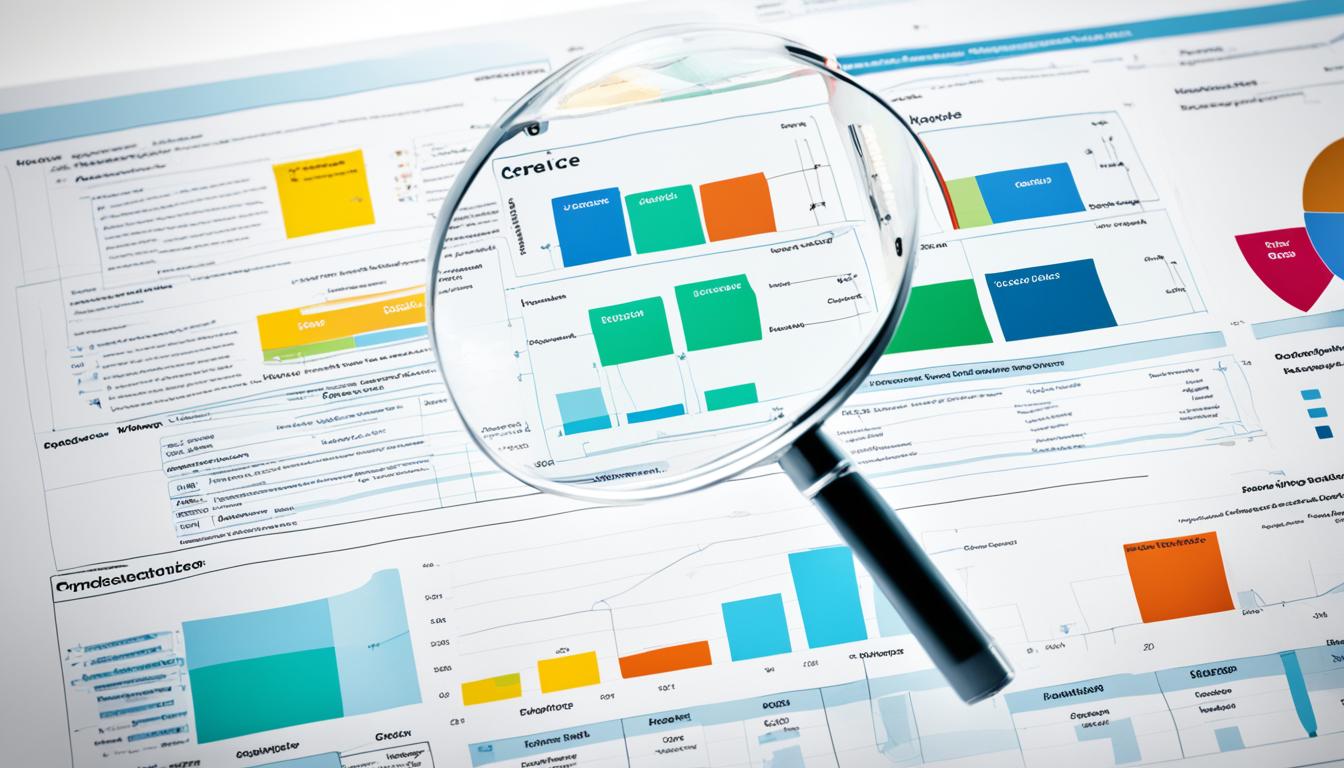The advent of big data and predictive analytics is transforming industries worldwide. In the field of marketing, big data is revolutionizing the way businesses understand and engage with their customers. By analyzing vast amounts of data, companies can gain unprecedented insights into consumer behavior, preferences, and trends. This information allows marketers to create personalized and targeted marketing strategies, leading to improved customer acquisition, retention, and overall brand awareness.
Big data has opened up a world of possibilities for data analytics in marketing. Through advanced data visualization techniques, marketers can easily interpret complex datasets and make data-driven decisions. Customer segmentation, another key component of big data marketing, allows businesses to divide their target audience into distinct groups based on various factors such as demographics, behavior patterns, and preferences. This enables marketers to tailor their messages and campaigns to specific consumer segments, increasing the chances of conversion and engagement.
Furthermore, big data plays a crucial role in digital marketing data analysis. By leveraging data from various sources such as social media, website analytics, and customer relationship management systems, marketers can track the performance of their marketing efforts in real-time. This allows for continuous optimization and refinement of marketing strategies, leading to better returns on investment and overall campaign success.
As big data continues to evolve, it brings forth new opportunities and trends in advertising. For instance, the emergence of virtual reality shopping experiences and personalized recommendations powered by big data exemplifies the fusion of technology and marketing. These innovations enhance the overall customer experience, making it more immersive and tailored to individual preferences.
Key Takeaways:
- Big data is transforming marketing strategies by providing unparalleled insights into consumer behavior and preferences.
- Data analytics in marketing allows for advanced data visualization and interpretation of complex datasets.
- Customer segmentation enables marketers to tailor their messages and campaigns to specific consumer segments.
- Big data plays a pivotal role in digital marketing data analysis, allowing for real-time optimization and campaign refinement.
- New trends in advertising, such as virtual reality shopping experiences and personalized recommendations, are driven by big data.
Big Data in Healthcare
In the healthcare industry, big data is revolutionizing the way patient care is delivered and managed. With the ability to analyze vast amounts of data from electronic health records, devices, and databases, healthcare professionals can make more informed decisions, deliver tailored treatments, and improve population health management.
One of the areas where big data is making a significant impact is telemedicine. Telemedicine allows patients to receive remote consultations and care, reducing the need for in-person visits and improving accessibility to healthcare services. Through telemedicine, healthcare providers can leverage big data to monitor patients in real-time, offer timely interventions, and provide continuous support.
Precision medicine is another area that benefits from big data analytics. By analyzing large datasets of genomic information, researchers can identify genetic predispositions to certain diseases and tailor treatment plans to individual patients. This approach enables more personalized and targeted therapies, leading to improved patient outcomes and higher treatment success rates.
Wearable devices, such as fitness trackers and smartwatches, are becoming increasingly popular among consumers. These devices provide real-time health data and enable continuous monitoring of vital signs. Big data analysis of wearable device data allows healthcare providers to track population health trends, identify early warning signs of diseases, and develop preventive care strategies.
To illustrate the impact of big data in healthcare, consider the following example:
Big Data Applications in Healthcare
| Application | Description |
|---|---|
| Telemedicine | Allows remote consultations and real-time monitoring of patients. |
| Precision Medicine | Customizes treatment plans based on individual genetic profiles. |
| Population Health Management | Tracks health trends, identifies preventive care strategies. |
| Wearable Devices | Provides real-time health data for monitoring and early disease detection. |
With the power of big data and advanced analytics, the healthcare industry is poised to transform patient care and improve overall health outcomes. The insights gained from big data analysis enable more targeted, personalized treatments, remote care options, and proactive disease prevention. As technology continues to evolve, big data will play an increasingly vital role in shaping the future of healthcare.
Transforming Finance
Big data is revolutionizing the finance industry, enabling transformative changes in areas such as algorithmic trading, risk management, and personalized banking experiences. The utilization of big data analytics and algorithms allows financial institutions to harness the power of vast datasets, making real-time decisions that optimize returns and minimize risks. By leveraging customer data analysis, institutions can provide personalized banking experiences that enhance customer loyalty and satisfaction. Additionally, the integration of emerging technologies such as blockchain, robo-advisors, and alternative lending platforms is driven by big data and predictive analytics, further revolutionizing the finance industry.
Enhancing Risk Management
Incorporating big data into risk management practices revolutionizes the identification and management of potential risks. Through the analysis of vast datasets and sophisticated algorithms, financial institutions can detect early warning signs, identify patterns, and assess various risk factors accurately. By leveraging big data, risk management processes become more efficient and proactive, allowing institutions to mitigate risks and make informed decisions.
Personalized Banking Experiences
With access to customer data analysis, financial institutions can offer personalized banking experiences tailored to individual preferences and needs. By understanding customer behavior and financial patterns, institutions can provide customized financial solutions, personalized recommendations, and targeted marketing offerings. This personalized approach enhances customer satisfaction, increases customer loyalty, and drives positive business outcomes.
Emerging Technologies
Emerging technologies, such as blockchain, robo-advisors, and alternative lending platforms, are transforming the finance industry and powered by big data and predictive analytics. Blockchain technology enables secure and transparent transactions, eliminating intermediaries and reducing costs. Robo-advisors leverage algorithms and big data analytics to provide automated investment advice, making investing more accessible. Alternative lending platforms leverage big data to streamline the lending process, enabling faster and more efficient access to loans for businesses and individuals.
Reinventing Retail
Big data is revolutionizing the retail industry, transforming how businesses operate and interact with customers. By harnessing the power of big data, retailers can gain actionable insights to optimize various aspects of their operations and deliver personalized experiences. Let’s explore the key areas where big data is making a significant impact in the retail sector:
Customer Segmentation and Personalized Recommendations
With access to vast amounts of customer data, retailers can effectively segment their target audience and create personalized marketing strategies. By analyzing customer demographics, purchase history, browsing behavior, and other relevant factors, retailers can tailor their product offerings and recommendations to individual preferences. This personalized approach enhances customer satisfaction and drives higher sales.
Demand Forecasting and Supply Chain Optimization
Data analytics play a crucial role in demand forecasting for retailers. By analyzing historical sales data, market trends, and external factors, retailers can accurately predict future demand, enabling them to optimize their supply chain and inventory management. This minimizes the risk of overstocking or understocking, reduces inventory costs, and ensures timely product availability for customers.
Virtual Reality Shopping Experiences
Virtual reality (VR) technology is revolutionizing the way customers shop. By leveraging big data, retailers can create immersive VR shopping experiences that allow customers to virtually explore products, try them on, or visualize how they would fit into their homes. This technology offers customers a unique and interactive way to engage with products, leading to higher engagement and conversion rates.
Artificial Intelligence in Retail
Artificial intelligence (AI) is another game-changer in the retail industry. By leveraging machine learning algorithms and advanced data analytics, AI can analyze vast amounts of customer data in real-time, enabling retailers to deliver personalized recommendations, automate customer service through chatbots, and optimize pricing strategies. AI-powered solutions improve operational efficiency, enhance customer experiences, and drive business growth.
Big Data Applications in Retail
| Application | Benefits |
|---|---|
| Customer Segmentation | – Tailored marketing strategies – Personalized recommendations |
| Demand Forecasting | – Inventory optimization – Decreased costs |
| Virtual Reality Shopping | – Enhanced customer engagement – Higher conversion rates |
| Artificial Intelligence | – Personalized experiences – Efficient operations |
| Supply Chain Optimization | – Reduced stockouts – Improved product availability |
As retailers embrace big data analytics, they gain a competitive edge by understanding customer preferences, optimizing operations, and delivering personalized experiences. The transformative power of big data in the retail sector is reshaping traditional retail models and driving innovation in customer engagement.
Manufacturing in the Digital Age
Big data is driving significant changes in the manufacturing industry, revolutionizing processes and unlocking new opportunities for efficiency and productivity. With the help of advanced analytics and predictive maintenance, manufacturers are able to better manage equipment failures, reduce downtime, and optimize maintenance costs.
Data analytics tools play a crucial role in improving product quality through early defect detection. By analyzing data from various sources, manufacturers can identify potential issues before they impact the final product, ensuring higher quality standards and customer satisfaction.
The convergence of automation, machine learning, and augmented reality technologies further empowers manufacturers to streamline processes and optimize operations. Automation helps automate repetitive tasks for increased efficiency, while machine learning algorithms enhance decision-making and optimize resource allocation. Augmented reality provides real-time insights, facilitating worker training and enhancing productivity on the shop floor.
Benefits of Big Data in Manufacturing
| Benefits | Description |
|---|---|
| Predictive Maintenance | Anticipating equipment failure to reduce downtime and maintenance costs. |
| Quality Control | Early defect detection to improve product quality and customer satisfaction. |
| Supply Chain Optimization | Efficient management of materials and resources for optimized operations. |
| Automation | Streamlining processes and reducing manual labor for enhanced efficiency. |
| Machine Learning | Data-driven decision-making and resource allocation for improved outcomes. |
| Augmented Reality | Real-time insights and worker training for enhanced productivity. |
As manufacturers embrace big data and related technologies, they gain a competitive edge by unlocking new possibilities for optimization and innovation. The integration of data analytics and advanced technologies in manufacturing processes is transforming the industry, paving the way for a more efficient, productive, and connected future.
5 Ways Businesses Can Optimize Big Data
To fully realize the potential of big data, businesses must take strategic steps to optimize its utilization. By investing in robust data infrastructure, recruiting top-tier talent, implementing effective data governance practices, fostering a data-driven culture, and prioritizing continuous learning and innovation, companies can unlock the true value of their data assets. These five key areas of focus will enable businesses to elevate their operations, decision-making processes, and overall success.
1. Robust Data Infrastructure
Establishing a strong data infrastructure is essential for harnessing the power of big data. This involves implementing scalable storage systems, utilizing cloud technologies, and ensuring efficient data integration and processing capabilities. By building a solid foundation, businesses can handle vast amounts of data and facilitate seamless data analysis and insights.
2. Talent Acquisition
Recruiting skilled professionals with expertise in data analytics and big data technologies is crucial for optimizing data-driven initiatives. Hiring data scientists, analysts, and engineers who possess the necessary skills and experience will enable businesses to extract meaningful insights from complex datasets, develop advanced algorithms, and drive innovative strategies.
3. Data Governance Practices
Implementing robust data governance practices ensures data quality, privacy, and compliance. By establishing clear policies, procedures, and standards for data management, businesses can maintain data accuracy, integrity, and security. Effective data governance also involves defining data ownership, access controls, and data lifecycle management processes.
4. Foster a Data-Driven Culture
Creating a data-driven culture is vital for maximizing the value of big data. This involves instilling a mindset where data is seen as a strategic asset and making data-based decision-making the norm. Encouraging cross-functional collaboration, providing training on data analysis tools and techniques, and fostering a culture of experimentation and risk-taking are key elements in building a data-driven culture.
5. Continuous Learning and Innovation
Innovation and continuous learning are essential in the rapidly evolving field of big data. Encouraging employees to stay updated with the latest advancements, attending industry conferences, and investing in training and development programs will ensure that businesses remain at the forefront of data-driven innovation. By nurturing a culture of continuous learning, businesses can adapt to changing market dynamics and drive meaningful outcomes from their data initiatives.
The Emergence of Big Data in Marketing
Big data has revolutionized the marketing industry by providing marketers with deeper insights into customer behavior and enabling more informed strategic decision-making. Through the use of customer, operational, and financial data sets, marketers can tailor their targeting approach, track operational success, and measure performance margins. This integration of data allows for targeted marketing campaigns, improved customer acquisition, and enhanced brand awareness.
The incorporation of big data in marketing has transformed customer relationship management (CRM) strategies. By analyzing customer data, marketers can gain a comprehensive understanding of their target audience, including their preferences, interests, and buying behavior. This valuable information empowers marketers to develop personalized marketing strategies that resonate with their customers, leading to higher engagement and conversion rates.
Furthermore, big data plays a crucial role in marketing automation. By utilizing operational data such as customer interactions, website visits, and social media engagement, marketers can automate various aspects of their marketing campaigns. This includes personalized email marketing, dynamic content creation, and targeted advertising. Marketing automation not only saves time and resources but also ensures that the right message reaches the right audience at the right time.
Financial data is another significant component of big data in marketing. Marketers can integrate financial data into their strategies to measure the effectiveness of their marketing campaigns in terms of return on investment (ROI) and revenue generation. By analyzing financial data, marketers can identify opportunities for cost optimization and resource allocation, ultimately driving more impactful marketing initiatives.
The Benefits of Big Data in Marketing:
- Customized targeting approach based on customer data
- Efficient tracking of operational success and performance margins
- Enhanced customer relationship management strategies
- Streamlined marketing automation processes
- Improved ROI measurement and revenue generation
Example Table: Analysis of Customer Data
| Customer Segmentation | Customer Preferences | Purchase History |
|---|---|---|
| Segment A | Preference 1 | Purchase 1 |
| Segment B | Preference 2 | Purchase 2 |
| Segment C | Preference 3 | Purchase 3 |
By leveraging big data, marketers can make data-driven decisions and develop strategies that are tailored to their target audience’s preferences and needs. This not only improves customer satisfaction but also enhances the overall effectiveness of marketing campaigns. With the continuous evolution of big data technologies and analytics tools, the future of marketing holds tremendous potential for marketers to connect with their customers on a deeper level.
Personalization at Scale
Personalized marketing is a powerful strategy that allows brands to connect with their customers on a deeper level. By leveraging consumer insights and implementing AI-centric strategies, businesses can customize their targeting approach to deliver tailored experiences based on customer preferences.
Big data plays a crucial role in enabling personalized marketing at scale. Through data analysis, brands can uncover valuable consumer insights such as behavior patterns and future responses. This information allows them to create targeted campaigns that resonate with their target audience.
One of the key benefits of personalized marketing is the ability to offer personalized products and experiences. By leveraging consumer data, brands can understand individual preferences and deliver products and services that meet their unique needs.
AI-powered strategies further enhance personalized marketing by making it more efficient to collect and analyze data. Artificial intelligence algorithms can process vast amounts of data, identify patterns, and make data-driven decisions in real-time. This enables brands to personalize their approach for a wider population of consumers.
The Benefits of Personalized Marketing at Scale:
- Improved engagement and customer satisfaction
- Higher conversion rates and sales
- Increased customer loyalty and retention
- Enhanced brand reputation and awareness
In a hyperconnected world, consumers expect personalized experiences. By leveraging big data, consumer insights, and AI-centric strategies, brands can meet these expectations and deliver targeted marketing campaigns that drive results.
| Key Elements of Personalized Marketing | Examples |
|---|---|
| Customizing content based on customer preferences | Using personalized product recommendations on an e-commerce website |
| Segmenting customers based on behavior and demographics | Sending targeted email campaigns to different customer segments |
| Personalizing marketing messages based on customer interactions | Sending personalized push notifications to app users |
Personalization at scale is a powerful tool for businesses looking to create meaningful connections with their customers. By leveraging big data, consumer insights, and AI-centric strategies, brands can deliver personalized experiences that drive engagement, loyalty, and ultimately, business success.
Predictive Analytics in Decision-Making
Predictive analytics plays a central role in digital marketing initiatives, harnessing the power of data to forecast consumer responses. By analyzing past interactions or purchases, businesses can make accurate predictions about future consumer behavior. This allows marketers to tailor their strategies and campaigns to effectively engage their target audience.
Two commonly used methods for consumer behavior analysis are media mix modeling and multitouch attribution. Media mix modeling involves analyzing the effectiveness of different marketing channels and their impact on consumer behavior. It helps marketers allocate their resources and budget for maximum ROI.
Multitouch attribution, on the other hand, examines the various touchpoints in a customer’s journey and assigns credit to each interaction. This helps businesses understand the contribution of different marketing channels and campaigns in driving customer conversions. It provides valuable insights into which marketing activities are most effective and which ones need improvement.
By leveraging these predictive analytics techniques, businesses can make data-driven decisions, optimize their marketing strategies, and maximize their return on investment. Let’s take a closer look at media mix modeling and multitouch attribution:
Media Mix Modeling
Media mix modeling allows marketers to evaluate the effectiveness of different marketing channels and determine the optimal allocation of resources. By analyzing historical data and key performance indicators (KPIs), businesses can identify the channels that are driving the most impact and adjust their media budgets accordingly.
For example, a company might find that their social media campaigns generate higher conversion rates compared to their email marketing efforts. They can then allocate more resources towards social media advertising to capitalize on its effectiveness. By continuously analyzing and refining the media mix, businesses can improve their marketing strategies and enhance their overall performance.
Multitouch Attribution
Multitouch attribution provides insights into the various touchpoints in a customer’s journey and helps determine the value of each interaction. By understanding which touchpoints have the most influence on conversions, marketers can fine-tune their campaigns and optimize their marketing spend.
For instance, a customer may discover a product through a social media ad, research it on a company’s website, and finally make a purchase after receiving an email campaign. Multitouch attribution would help assign credit to each touchpoint and provide a holistic view of the customer journey. This enables marketers to distribute their resources strategically and focus on the touchpoints that have the greatest impact on driving conversions.
By utilizing predictive analytics techniques such as media mix modeling and multitouch attribution, businesses gain valuable insights into consumer behavior, improve their decision-making processes, and optimize their marketing strategies for maximum effectiveness. It’s essential for businesses to leverage the power of predictive analytics in today’s data-driven marketing landscape to stay ahead of the competition.
The Impact of Data Privacy Regulations
Data privacy regulations, such as the General Data Protection Regulation (GDPR) and the California Consumer Privacy Act (CCPA), are designed to empower users with more control over their personal data and safeguard their privacy. These regulations impose strict data protection rules on businesses that collect and process user information.
While the implementation of data privacy regulations may require organizations to make changes to their data collection practices, it is not expected to hinder the progress of big data in marketing. Instead, these regulations serve as a catalyst for businesses to prioritize user consent and transparency in their data management practices.
By obtaining explicit user consent and adopting transparent data policies, marketers can build trust with their audience and enhance brand loyalty. It also encourages businesses to explore innovative methods to engage users while respecting their privacy rights.
The GDPR, applicable in the European Union, and the CCPA, applicable in California, both emphasize the importance of user consent and provide individuals with the right to access, rectify, and delete their personal data. These regulations place the responsibility on businesses to handle user data ethically and securely.
Overall, data privacy regulations play a vital role in striking a balance between the use of big data for marketing purposes and protecting user privacy. By complying with these regulations and prioritizing user consent, businesses can leverage the power of big data while maintaining the trust and loyalty of their customers.

Integrating Offline and Online Data
Integrating offline and online data is a crucial endeavor in data-driven marketing. While it presents challenges, successful integration leads to valuable insights into consumer behavior, detailed audience profiles, and the ability to optimize omnichannel strategies. By combining offline data, such as purchase history and loyalty card information, with online data, marketers gain a comprehensive view of consumer preferences and actions.
| Data Source | Advantages |
|---|---|
| Offline Data |
|
| Online Data |
|
By fusing offline and online data, marketers can create comprehensive audience profiles, understanding their preferences, buying patterns, and interactions across various channels. This rich dataset empowers marketers to build highly targeted campaigns, deliver personalized experiences, and optimize customer touchpoints.
Omnichannel Optimization
Omnichannel optimization is a critical component of data integration. It refers to aligning marketing efforts across offline and online channels to deliver a seamless and consistent customer experience. By leveraging integrated data, marketers can:
- Track customer interactions across multiple touchpoints
- Deliver personalized messaging and offers
- Optimize channel attribution to allocate resources effectively
- Implement real-time personalization at every stage of the customer journey
Through omnichannel optimization, businesses can foster customer loyalty, improve conversion rates, and drive revenue growth.
Smart integration of offline and online data is the key to unlocking valuable consumer insights, creating accurate audience profiles, and optimizing omnichannel marketing strategies. By harnessing the power of both data sources, businesses can drive growth, enhance customer experiences, and stay ahead in a data-driven landscape.
Conclusion
Big data has revolutionized marketing strategies, paving the way for personalized and targeted approaches. The use of big data offers numerous benefits to businesses, including targeted marketing campaigns, improved customer acquisition and retention, and enhanced brand awareness. By leveraging data-driven strategies, marketers are able to gain valuable insights into consumer behavior and make informed decisions to drive business growth.
However, there are challenges that need to be addressed in order to fully harness the power of big data in marketing. Coordinating cross-department analytics and ensuring ethical data usage are crucial considerations. Transparency and responsible data practices are key to building trust with consumers, protecting their privacy, and maintaining regulatory compliance.
As technology continues to evolve, big data will play a pivotal role in shaping the future of marketing. With the right strategies in place and a commitment to transparency, businesses can leverage big data to develop innovative marketing strategies, create personalized customer experiences, and stay ahead of the competition. The future of marketing lies in the ethical and effective utilization of big data to drive business success.
FAQ
What is the role of big data in shaping marketing strategies?
Big data plays a fundamental role in marketing by enabling personalized marketing strategies, customer segmentation, and targeted marketing campaigns. It also provides insights into customer behavior and improves strategic decision-making.
How does big data impact the healthcare industry?
In the healthcare industry, big data allows for the analysis of vast amounts of data from electronic health records, devices, and databases. This data enables tailored treatments, remote consultations, and preventive care on a large scale.
How is big data transforming the finance industry?
Big data is reshaping the finance industry through algorithmic trading, risk management, and personalized banking experiences. It enables institutions to offer personalized banking experiences, boost customer loyalty, and enhance risk management.
How does big data reshape the retail space?
Big data enables retailers to analyze vast amounts of customer data to effectively segment their target audience, tailor marketing strategies, optimize product offerings, and provide virtual reality shopping experiences.
How does big data enhance manufacturing processes?
Big data enhances manufacturing processes by predicting equipment failures, improving product quality, and streamlining operations through automation, machine learning, and augmented reality technologies.
How can businesses optimize the potential of big data?
Businesses can optimize the potential of big data by investing in robust data infrastructure, recruiting skilled professionals, implementing data governance practices, fostering a data-driven culture, and prioritizing continuous learning and innovation.
How has big data transformed the marketing industry?
Big data has transformed the marketing industry by providing deeper insights into customer behavior and improving strategic decision-making. It enables targeted marketing campaigns, customer acquisition, and brand awareness.
How does big data enable personalized marketing at scale?
Big data enables personalized marketing at scale by revealing consumer preferences, behavior patterns, and future responses. It allows brands to create targeted campaigns and offer personalized products and experiences.
What role does predictive analytics play in digital marketing initiatives?
Predictive analytics plays a central role in digital marketing initiatives by using past interactions or purchases to forecast consumer responses. It provides insights into the effectiveness of marketing activities and optimizes ROI.
What is the impact of data privacy regulations on big data in marketing?
Data privacy regulations, such as GDPR and CCPA, aim to give users more control over their data and protect their privacy. While these regulations may impact data collection practices, they are not expected to slow down the progress of big data in marketing.
How can offline and online data be integrated in data-driven marketing?
Integrating offline and online data provides accurate consumer insights, audience profiles, and enables omnichannel optimization. Offline data, such as purchase history and loyalty card information, can be combined with online data to create a comprehensive view of consumer behavior and preferences.
What is the future of big data in marketing?
Big data is revolutionizing marketing strategies by enabling personalized and targeted approaches. While there are challenges to overcome, such as coordinating cross-department analytics and ensuring ethical data usage, big data will continue to shape the future of marketing.



